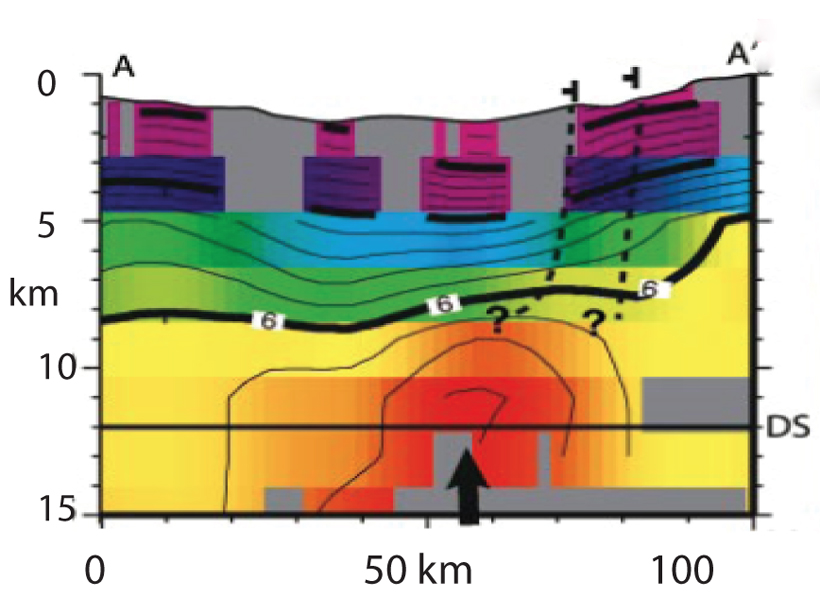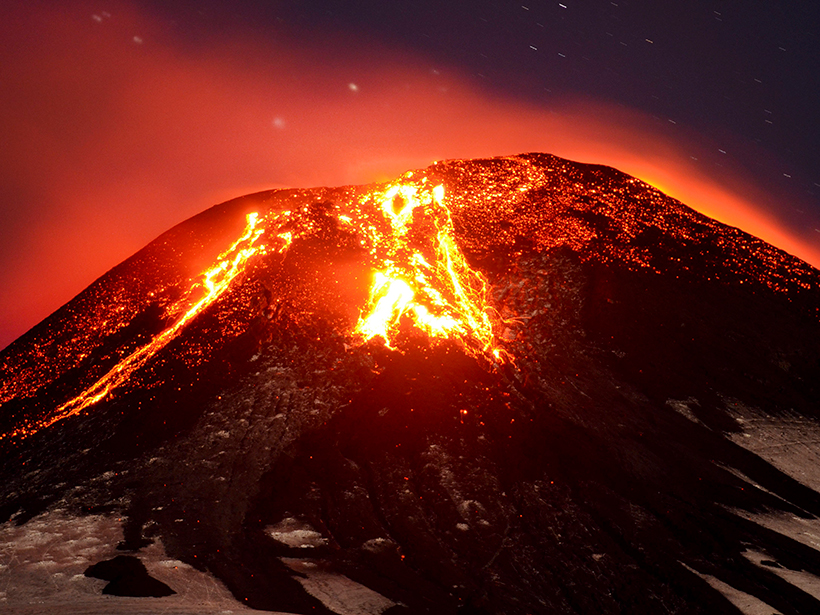How the very slow moving African Continent, with a lithosphere of quite varied age elements and thickness, has responded to ongoing asthenospheric modification.
lava & magma
Working Together Toward Better Volcanic Forecasting
A National Academies report highlights challenges and opportunities in volcano science.
What Feeds Indonesia’s Destructive Mud Eruption?
New advances in seismic investigations suggest links in plumbing between nearby magma volcanoes and a mud-erupting system that has been spewing for more than a decade.
Scientists Discover Stromboli-Like Eruption on Volcanic Moon
Jupiter’s moon Io is known for its lava fountains and roiling lava lakes, but scientists had never seen such an intense eruption in their data until now.
Probing Magma Reservoirs to Improve Volcano Forecasts
The roots of volcanoes remain enigmatic, largely because geophysical and petrological models remain rudimentary. Scientific drilling and exploration can help.
Homemade Lava Flows Fuse Science with Art on Video
An artist’s impulse to recreate natural landscapes leads to fiery scientific explorations that elucidate the behavior of erupting lava and the solid shapes it becomes.
Can Volcanic Gas Levels Predict an Eruption?
Researchers test whether the changing composition of volcanic gas can signal a coming eruption in Chile’s Villarrica volcano.
Understanding Kamchatka’s Extraordinary Volcano Cluster
An international seismological collaboration in Kamchatka, Russia, investigates the driving forces of one of the world’s largest, most active volcano clusters.
An Improved Model of How Magma Moves Through the Crust
Researchers have developed a new numerical model that can, for the first time, solve for both the speed and the path of a propagating dike.
Balloons of Lava Bubble into the Ocean from Seafloor Blisters
These peculiar features of submarine volcanic eruptions could be the result of undersea lava lakes.










